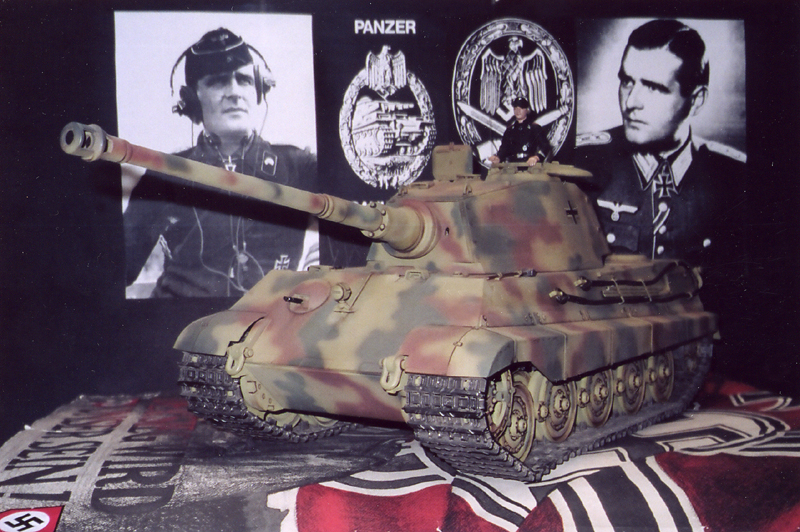
HAUPTMANN WALTER SCHERF. The first unit to receive the new King Tiger tank was unit Schwere Panzer Abteilung 503, under the command of Hauptmann Walter Scherf, an accomplished and skillful Panzer Commander, who was honored with the distinction of being awarded Die Ritterkreuz on 23 February 1944. From the Panzer I to the Panzer VI, Walter Scherf was able to marry these battle talents to a capacity for the larger strategic factors involved in command of the Panzertruppe's armored fighting force. Few men in the history of the Panzertruppe have been able to make the transition from the Panzer I, Panzer II, Panzer III, Panzer IV, Panzer V, Panzer VI, in each of one of these tanks, to successful high command in a capacity to probe deeper and see further than his contemporaries and ability to give effect to this insight in a practical way. His experience in armored combat was probably longer and more diverse than any other. From 1939-1945, he met and battled practically every type of allied armor. Walter Scherf emerged as a truly outstanding individual, where his skill, initiative, and flexibility were paramount. He took his responsibilities right to the heart into the very vortex of armored combat and sustained his seriously energetic approach to every situation. Hauptmann Walter Scherf latter in the war became the Commanding officer of the newly created Schwere Panzerjager Abteilung 512, equipped with the Jagdtiger heavy tank destroyer, which this unit included top quality personnel and stellar individuals such as Hauptmann Albert Ernst, an experienced Panzerjager, who was nicknamed "The Tiger of Vitebsk" for destroying 54 T-34's with his Nashorn tank destroyer in Russia. And Oberleutnant Otto Carius, who had been already decorated with the Oak leaves while with 2./Schwere Panzer Abteilung 502. The tanks themselves were just assemblies of steel plates, engines, tracks and guns, but it was the crews who manned them who produced the successes and the legends. The German King Tiger Tank helped create the impression of a powerful German armored force with almost invulnerable tanks. Indeed, the King Tiger Tank was the ultimate in tank design and firepower of its day; the very essence of German armored might. In truth, the main weapon was fear. Thanks to the Allies, the King Tigers apparently exerted an almost mystical fascination about these armored fighting vehicles. In essence, the Allies feared these behemoths. For the Allies it was a paralyzing sight the first time they saw the King Tigers, and they themselves established the King Tiger's reputation as the most feared of all German weapons and its legendary fame. Luckily for the Allies, very few were actually committed in battle, but still the Allies would run like hell in a cowardly rout if a King Tiger would appear on the battlefield. This caused the King Tiger's crews morale to zoom even in the final days of the war and depressed that of the Allies. The King Tigers did great physical and morale damage to the enemy, and restored and fortified German tank morale. Waging war is about more than bullets, bombs or bayonets, waging war is also about prevailing in mental conflict, about making the other guy think the fight is lost, preferably before it has begun. One need not destroy one's enemy, one need only destroy his willingness to engage.